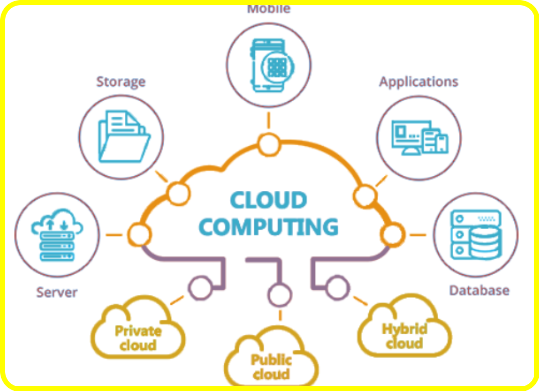
It wasn’t so long ago when people thought cloud computing wouldn’t last. That it would fade away, like so many other nifty technological ideas. When it was first announced, it offered a lot of promise, but in reality there wasn’t anything concrete to keep most people interested. However, over the years, many IT organisations started to jump on the bandwagon, convinced that it was the real game changer in the IT landscape. It has had a huge impact on the way data centres are built, how software is deployed and how tools are upgraded.
IT is a significant component of business conduct nowadays, this in turn has led to cloud computing having a fundamental impact on the way companies now operate. Virtually every kind of company you can think of, uses some kind of software, infrastructure and platform that is based on the cloud, which in turn enables them to streamline their workload. This ultimately reduces the level of complexity in IT, improving visibility, while reducing costs.
With technology in general, forever growing and improving, we can expect more change for the future. It’s for this reason why we should consider taking a step by, just to look at where cloud computing may be in the future. Below are 5 trends that we think will have some kind of meaningful long term repercussions for cloud, in the years to come.
1. Cheaper Storage Solutions | | Cloud Computing
Cloud computing has witnessed a great deal of change over the years. In 2017, two of the main trends was massive growth, and considerably cheaper prices. Typically prices will increase as demand increases, but since cloud computing appears to be all out there alone, without any real competitors, it seems we will continue to witness decreasing prices. This of course can be attributed to the level of investment in storage capacity. At present, the maintenance of 1 TB of cloud storage space costs less than 10 cents. This low cost storage solution, has allowed many companies to offer extremely cheap solutions for companies, which in turn drives growth, while making cloud computing even more affordable.
2. Cloud Solutions and Artificial Intelligence
Artificial intelligence and cloud based solutions, complement themselves in so many ways. AI has monstrously high data demands. Cloud storage solutions are all about hosting data in a more centralised fashion. AI is properly harnessed and unleashed in the form of pattern recognition, machine learning and more.
Cloud storage solutions not only offer end users a place where they can store large amounts of data, they also come with processing power. AI is not only set to improve over the years, but also open up new possibilities. The effectiveness and efficiency of AI will depend greatly on the quality and size of its data sample.
3. Cloud Computing going Mobile
Mobile devices are extremely popular today, and we can only assume this is set to increase with time. This in turn means, a larger impact on our lives and how we conduct business. Instead of having to come into work, people can now work remotely, anywhere in the world, using their mobile device. Because of this increased flexibility, we’re also witnessing an increase in the usage of cloud computing, to compliment this flexibility. With cloud-based applications, end users are able to access apps from anywhere in the world, at any time, and that’s something an employee, who’s always on the move, requires. Now they can simply log into an application, using their smart device and work via the cloud, without having to get up and go to a physical office space. An increasing number of companies are starting to acknowledge the many benefits cloud computing is able to bring to mobile users, when it comes to running a business.
4. Internet of Things (IoT)
IoT devices is a cloud computing trend for the future. Most IoT devices that you find today, use the cloud to operate, which makes it possible to connect these systems and generate data on specific user patterns and habits.
This is the primary reason why so many companies are now shifting their efforts over to IoT connected devices, such as cars, home appliances and electronics. The data that is sourced by these IoT devices, will in turn increase the demand for cloud-based apps and storage solutions.
5. Disaster Recovery and Cloud Security
A significant portion of the cloud budget goes towards disaster recovery and backup solutions, which means there is a significant shared responsibility for public cloud providers. Public cloud providers such as AWS and GCP , are responsible for disaster recovery and backup solutions, as well as all of the cloud security infrastructure, whereas the users responsibility is to his/her own data, while complying with any guideline rules. Security concerns are always there, always on the rise, which is why they are a crucial issue for many companies, despite the fact that so many companies are moving to cloud computing without first, fleshing out a proper compliance protocol and security strategy. We’ve witnessed the introduction of GDPR, which has already had a significant impact in yesteryears. Companies now are forced to look at the security practices they adopt, when handling other peoples data.
